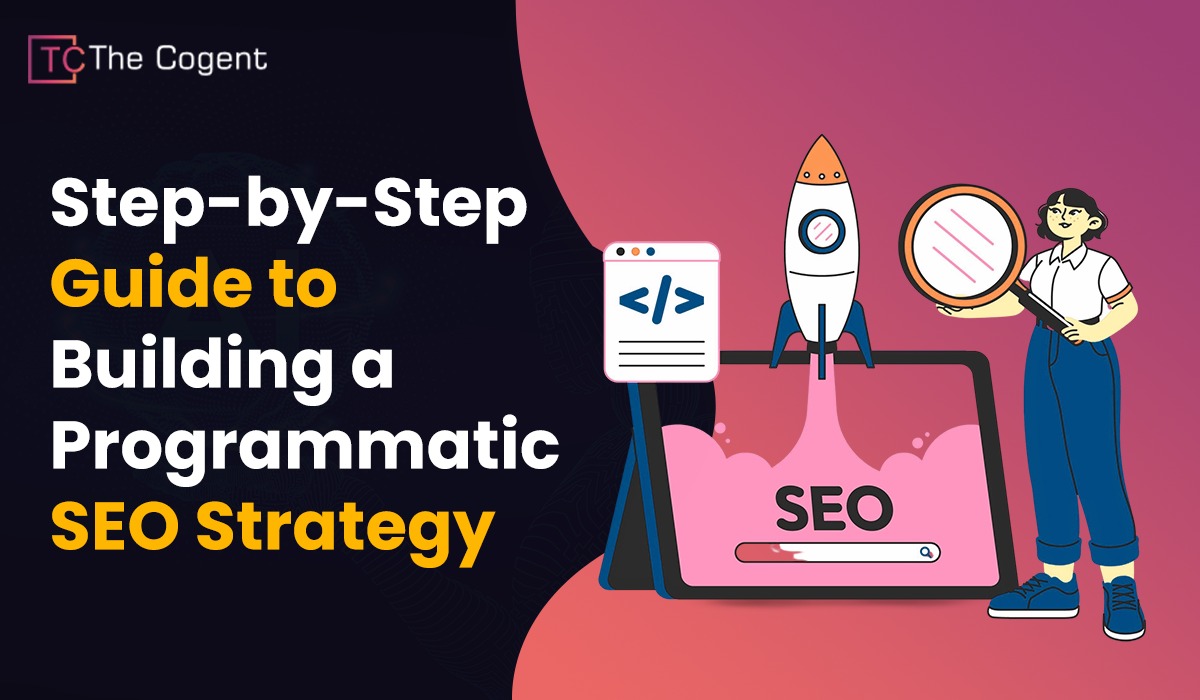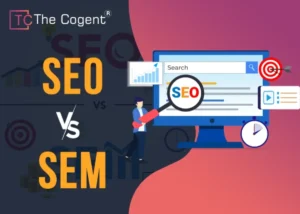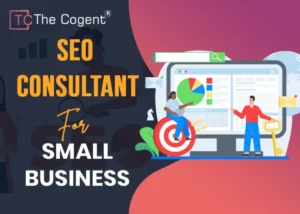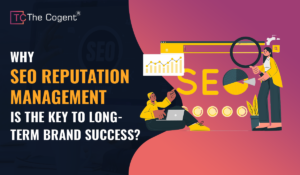1. Introduction
Programmatic SEO automates the creation of huge volumes of optimized web pages for long-tail keywords on scale. It is the best way to get organic traffic for a website on an exponential scale while requiring very little manual operation. Using a combination of data, templates, and smart automation, businesses can thoroughly dominate niche search queries, thereby gaining much exposure within the search engines. Programmatic SEO works best for e-commerce sites, directories, and marketplaces. Leading the transition in this space is The Cogent that acts as a digital growth partner helping businesses implement, automate, and scale programmatic SEO to achieve sustainable and high-impact search performance.
2. What is Programmatic SEO?
Programmatic SEO refers to the practice of automating the processes of generating and optimizing thousands of web pages that target particular keyword variations. Thus, instead of manually writing content, template pages are created and populated using structured data to scale search-optimized pages. Service + location pages (e.g., “plumber in Austin”), product variations (e.g., “blue running shoes size 10”), and data-driven content like rankings or comparisons are common cases. While traditional SEO focuses on fewer pages that are manually created, programmatic SEO facilitates mass creation of pages and targets long-tail keywords, the very prospect businesses that want to achieve gigantic growth in organic searches search for.
3. Why Programmatic SEO Matters
Programmatic SEO allows businesses to scale up their mere content creation with very little effort, which means it is entirely possible to create thousands of optimized pages without having to write each one manually. Scalability is truly essential for targeting long-tail keywords—search terms that are very specific and enjoy low competition, but in their totality, generate massive traffic. By going after more keyword variations, companies can simply improve their visibility and also tap into an actually profitable market. Likewise, it provides some healthy competitive advantage in local and niche markets, where hyperlinks to interest-based or location-based webpages tend to generate a lot of traffic. Given the recipe is right, big programmatic SEO turns a mountain of data into powerful, revenue-generating content that build an organic reach much faster than traditional SEO.
4. Step-by-Step Process to Build a Programmatic SEO Strategy
Step 1: Identify High-Potential Keyword Patterns
Conduct initial research on keywords following consistent patterns and exhibiting more potent intention to search. Keywords should be long tail combinations, e.g., “Best [Service] in [City]” or “[Product] under [Price].” Using tools such as Ahrefs or SEMrush should reveal search volume, competition, and variants worth mass targeting.
Step 2: Create a Structured Data Framework
Then gathering relevant data from internal databases, APIs, or public sources should be well-structured into fields such as product name, location, features, price, or rating. Clean, structured data translates into the widest possible consistency and efficiency when providing information into templates used in the generation of pages.
Step 3: Design Scalable Page Templates
From this, build dynamic templates with editable placeholders for all important SEO items-titles, meta tags, headers, content blocks, and CTAs. These templates must function well on mobile, load fast, and maintain a consistent visual language that supports thousands of unique yet cohesive pages created without manual intervention.
Step 4: Automate Content Generation
Generate unique, natural-sounding content in templates using AI tools or content scripts. Quality and relevance must come first with no plagiarism or keyword stuffing. The level of automation must have some level of editorial oversight in ensuring that value is given to the end-user and that it meets search engine quality standards.
Step 5: Build SEO-Friendly URLs & Metadata
Lastly, create simple-to-understand URLs that already include target keywords. Titles, meta descriptions, and header tags can then be fitted into every page programmatically. This enhances relevance, click-through rates, and indexing across search engines.
Step 6: Implement Smart Internal Linking
Interlink those related pages to create a well-structured site and smooth navigation. Use automated linking strategies based on relevancy or taxonomy to improve crawlability, link equity distribution, and user engagement time.
Step 7: Monitor, Test, and Iterate
Keep track of all performance artifacts through Google Search Console, GA4, and Screaming Frog and identify highest-gained pages, content gaps, or technical issues. Based upon data-driven insights, evolve the templates, focus on targeted keyword adjustment, and fine-tune internal linking for an ever-returning SEO result.
5. Tips for a Successful Programmatic SEO Launch
High-quality content should be the number one priority for programmatic SEO launch and will include enriching pages with unique elements like user reviews, FAQs, or data insights so the content is not considered thin or duplicate. All templates should be made mobile-responsive and fast-loading because speed and accessibility affect the rankings directly. Do not ignore the technical SEO bits, including submitting XML sitemaps to search engines, setting indexing rules correctly, and managing crawl budgets to ensure important pages are found and ranked. Marry automation with human supervision to keep high standards of quality and user value maintained across those thousands of pages from day one.
6. Why Partner with The Cogent?
Cogent has proven and tested programmer-scale SEO approaches for business implications. With sharper insight into programmatic SEO, we marry automation with top-notch content and sound technical optimization to yield real-tempered returns. We take the matter from start to finish-by spotting today’s most profitable keyword patterns, building structured data schemes, designing scalable templates, automating the content creation, fixing internal links, tracking performances, and continuous optimization. Partnering with The Cogent means that businesses get a growth partner that treats their business with absolute seriousness and offers efficient data-driven SEO solutions capable of enhancing visibility, traffic, and long term ROI at scale.
7. Conclusion
If applied correctly, a programmatic SEO strategy will develop scaling organic traffic to an all-time high. An approach using data, automation, and intelligent content frameworks allows businesses to target thousands of long-tail keywords and gain domain dominance in specialist search segments. The net result of this is exponential growth, better ROI, and sustained visibility—all built around a systematic data-based approach. While older SEO techniques give you some scalability, programmatic techniques give you more scalability and precision. What about giving a nice makeover to your SEO and hitting untapped search demand? Want to scale SEO unlike ever before? Reach out to The Cogent: Your trusted digital partner in automating and scaling SEO for long-term digital success.
FAQs
The Indian style of SEO marketing involves the use of automation to optimally generate pages in a large number, while manually managed and optimized content is a cornerstone of the traditional approach to SEO for usually very few high-value pages.
These websites, which have repeatable content patterns such as e-commerce, directories, travel portals, or marketplaces, benefit most from programmatic SEO because of the needs for scale and targeting long-tail keywords.
Yes. If this form of SEO is done badly, then you can have pages that are thin on content, duplicate pages, and problems with indexing; and all these will be detrimental to rankings and user experience.
Generally speaking, basic coding knowledge helps; however, nowadays there are many tools that simplify implementation. You could always hire an agency partner or use a platform that allows for no-code implementation, thus making it accessible even for a non-technical team.
Normally results appear within the first 3–6 months, depending on how often the site is crawled, how strong the competition is, and the quality of your content. Continuous monitoring and iteration of your campaigns will shorten the road to performance gains over time.



